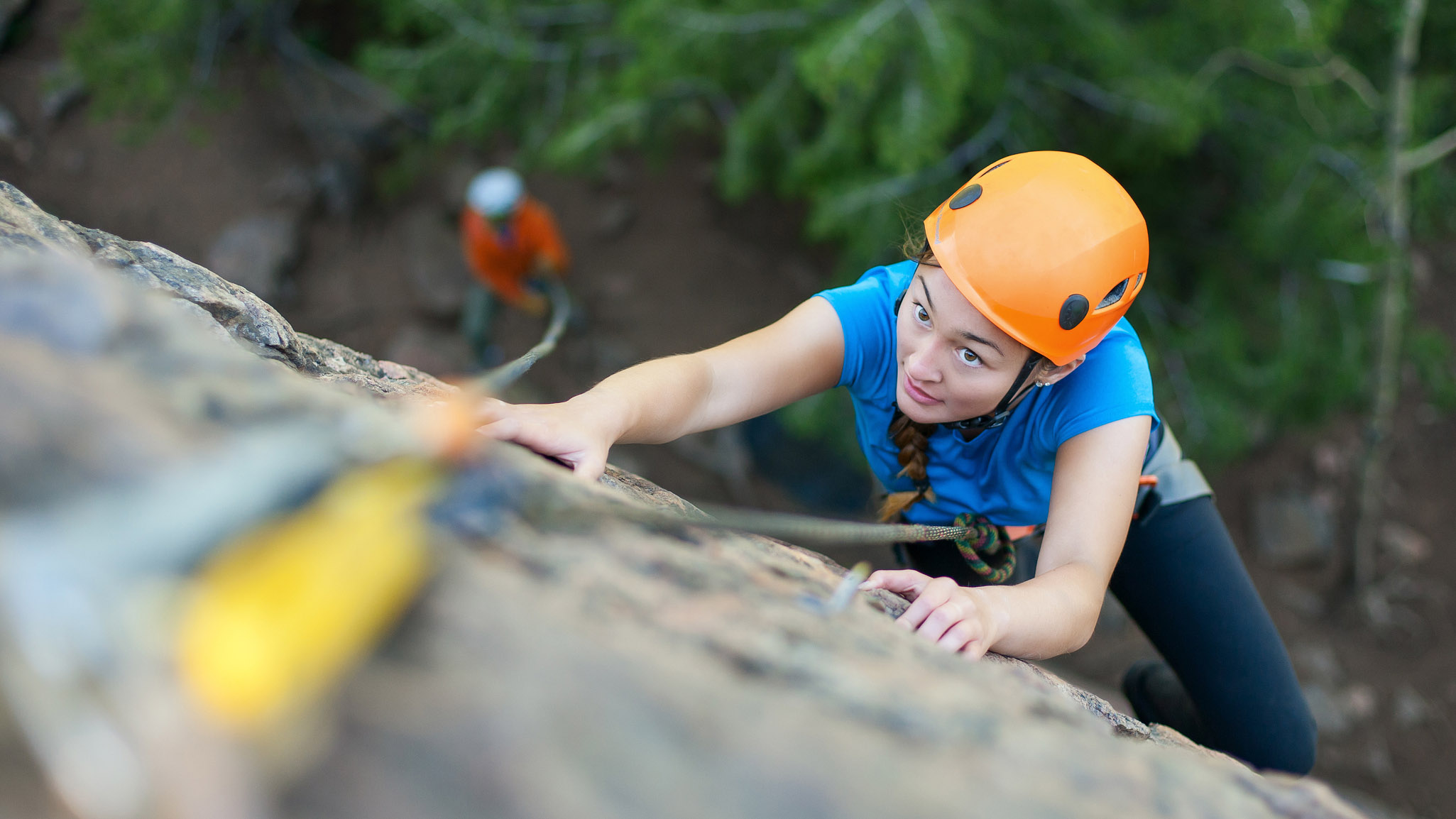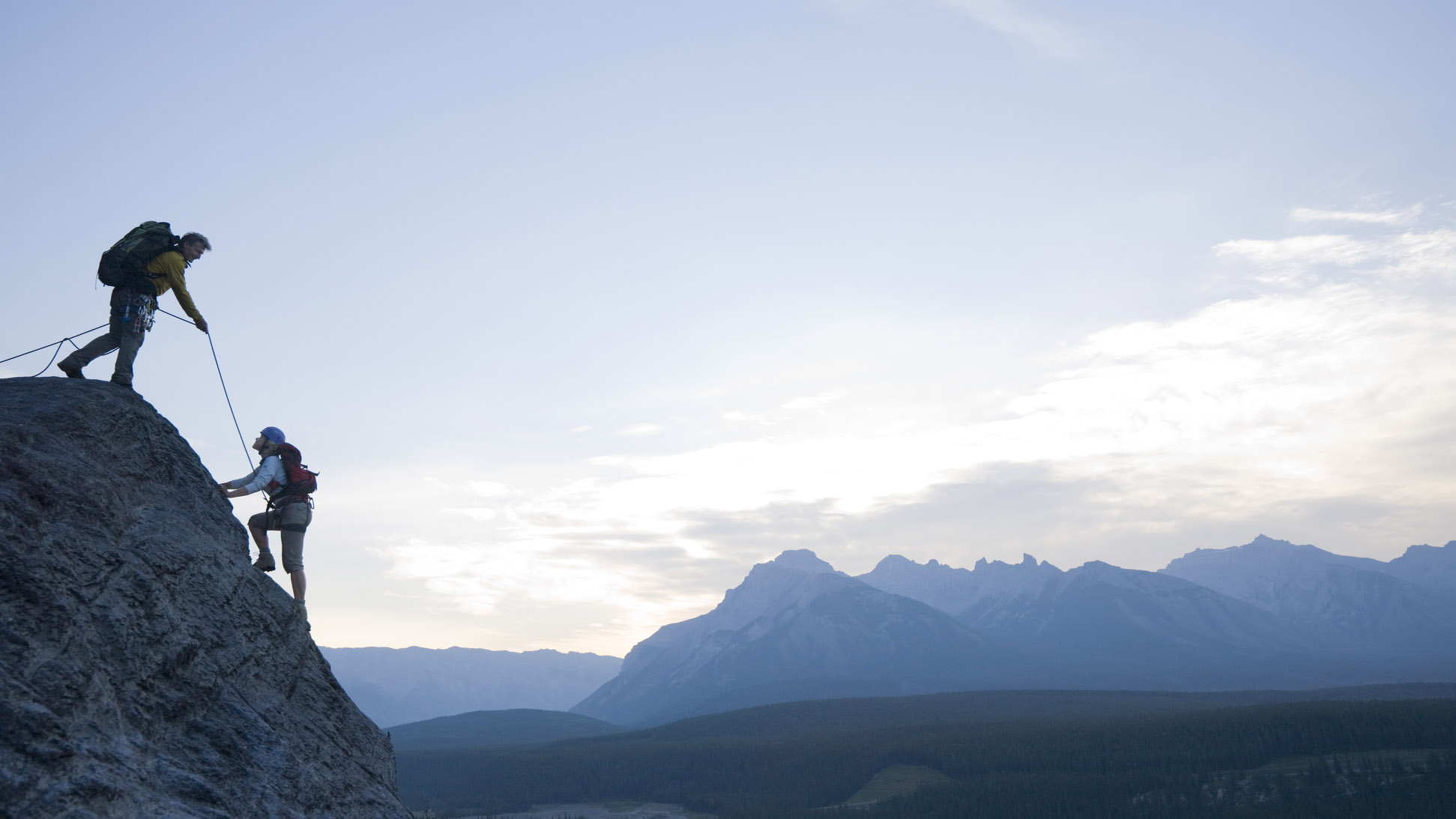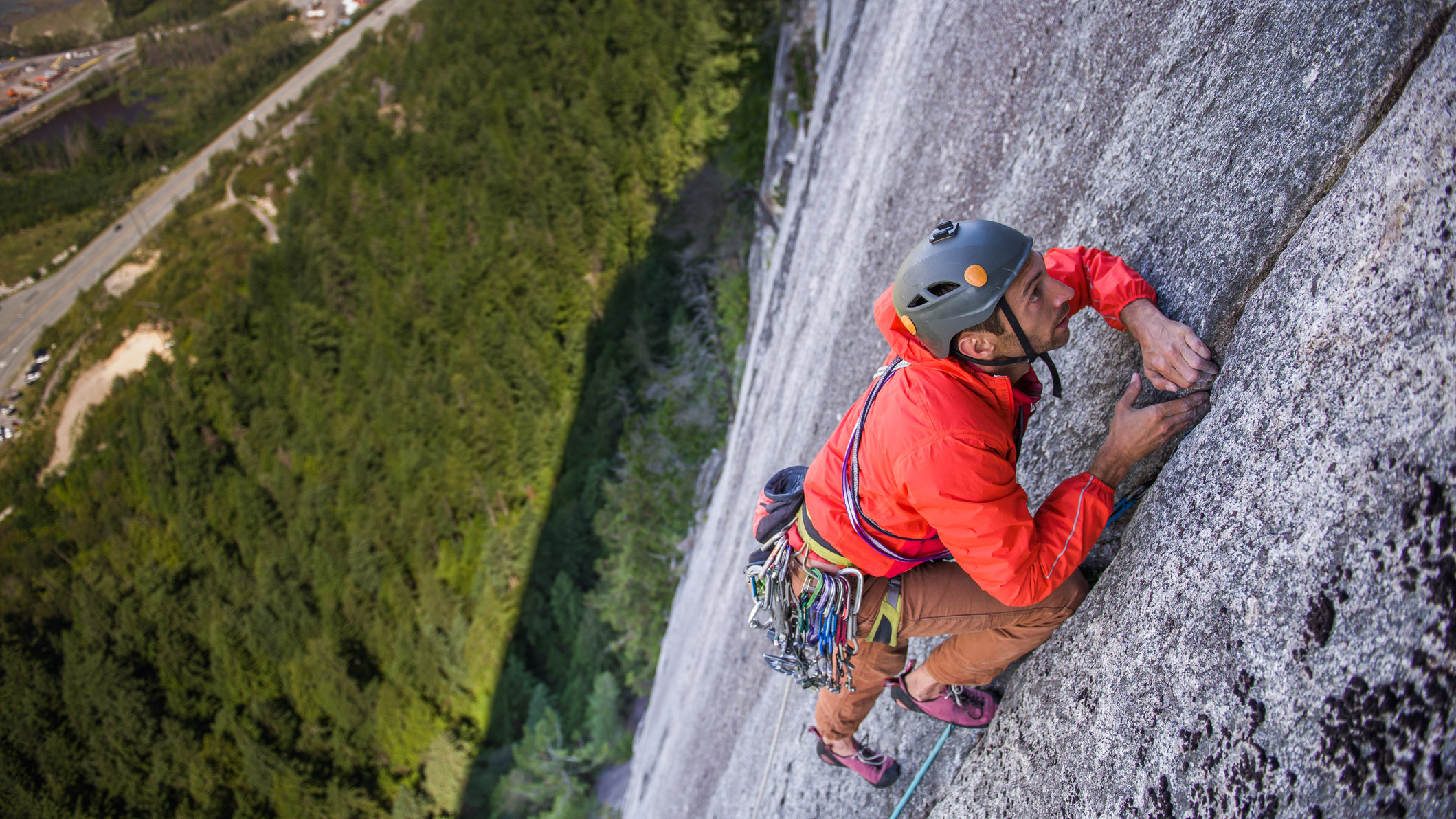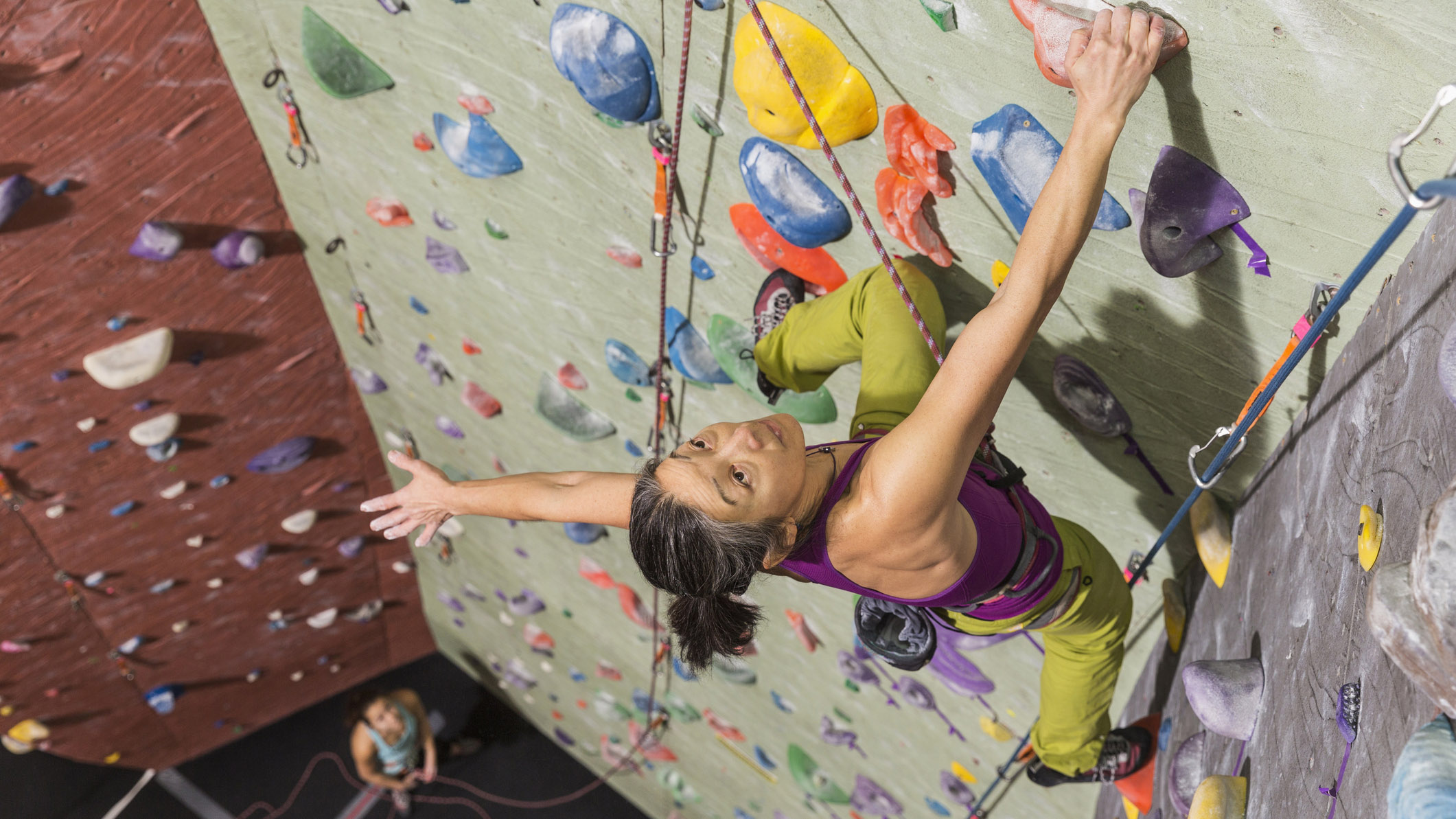What is top roping and how does it differ to other approaches to rock climbing?
What is top roping? We consider the different methods, where you can do it, the ethics and what sets it apart for lead climbing

What is top roping? At its most fundamental level, top roping is climbing with the rope already fed through an anchor at the top of a climb. It is the opposite of lead climbing, where the climber places protection as they go, whereas with top roping the protection is provided by the anchor and the belayer. If you are looking to begin your rock climbing journey, top roping is the safest and easiest way to learn.
The advantage of top roping is that it reduces the risk of taking a nasty fall. This is because the belayer is able to keep the rope taut throughout the climb, meaning that if the climber was to slip, they wouldn’t fall very far at all – as long as the belayer was doing their job properly, that is. Thanks to this, a top roping setup is often used by instructors when introducing novice climbers to the sport.
What is top roping? The two methods
There are two different varieties of top roping, one of which is rather confusingly called bottom roping. Bottom roping is where the belayer stands at the bottom of a single-pitch route and the rope is already threaded through the anchor at the top of the climb and back down to the climber. The climber climbs to the top and can then be lowered back down by the belayer. You don’t necessarily need to know how to belay to climb in this way, though your partner will probably want a turn on the wall too, so it’s best to learn. Bottom roping is probably the safest way into rock climbing for beginners.

The other type of top roping is where the belayer is anchored above the climber at the top of the climb. In this scenario, the belayer ‘brings the climber up’, keeping the rope taut just as they would when bottom roping. Following a leader up a climb in this way is also known as seconding and, unlike when bottom roping, the climber has to remove the protection that leader has placed as they ascend. Whereas the belayer is on solid ground when bottom roping, when top roping in this way it is essential that the belayer is anchored securely to the crag, as there’s probably a big drop below them. Obviously, to reach the top of the climb, the belayer usually has to lead climb their way there, which brings us nicely to…
How top roping differs from lead climbing
Lead climbing is where a climber places the protection while climbing, clipping the rope into secured quickdraws (runners) as they go and being belayed from below. It is riskier than top roping because the protection is below them, so they will fall further before the rope goes taut and they are caught. A fall when lead climbing puts more strain on the rope, the gear, the climber and the belayer than a fall when top roping.

In sport climbing, the leader clips quickdraws into pre-installed bolts and then clips the rope into them. When trad climbing, the leader creates runners by placing tools like nuts, hexes and cams into cracks in the rock, which become the equivalent of bolts on a sport climb. Quickdraws are then attached to these pieces of protection and the rope is clipped in.
Some climbing gyms have an area where you can practice leading in a sport climbing style, by ascending a sequence of already secured quickdraws, threading the rope through as you go.
All the latest inspiration, tips and guides to help you plan your next Advnture!
Where can you go top roping?
In theory, you can practise top roping anywhere as long as you have a trad climbing partner who is willing to lead each pitch. Sport climbing venues – crags that already have bolts installed into the rock – are an easier place to learn, but again you will need a partner who is confident leading.

Crags where you can access the top easily are ideal for bottom roping outdoors, as you can install the anchor, thread the rope through and throw it down to the bottom of the climb. That way, you can walk around to the foot of the crag, attach to the rope and climb to your heart’s content. Large groups of mixed ability will often use top ropes, as once it’s set up its pretty quick and easy to get a lot of climbing done. It’s also worth noting that the same setups can be used on ice climbing routes too –get that ice axe ready!
Climbing gyms often have a bottom roping setup as it is the ideal way to train for climbing outdoors all year round. It’s normal that you have to prove you know how to belay and how to tie basic rock climbing knots to be granted access to the equipment.

What are the ethics of top roping?
As well as being a good way into the sport of beginners, climbers often use a top rope to practise difficult climbs before committing to leading, though this is a source of tension in the climbing community. Some consider it a fair and prudent approach, while purists believe it is akin to cheating, removing much of the challenge and therefore the essence of a climb.

However, where we’re concerned, the best climber is the one having the most fun. Do whatever makes you happy in the outdoors, whether its top roping or not. After all, how would naysaying climbers feel if free soloists suddenly started calling them cheats for climbing with ropes? Exactly. Be safe out there, do what you feel comfortable with and enjoy yourself.
Alex is a freelance adventure writer and mountain leader with an insatiable passion for the mountains. A Cumbrian born and bred, his native English Lake District has a special place in his heart, though he is at least equally happy in North Wales, the Scottish Highlands or the European Alps. Through his hiking, mountaineering, climbing and trail running adventures, Alex aims to inspire others to get outdoors. He's the former President of the London Mountaineering Club, is training to become a winter mountain leader, looking to finally finish bagging all the Wainwright fells of the Lake District and is always keen to head to the 4,000-meter peaks of the Alps. www.alexfoxfield.com

